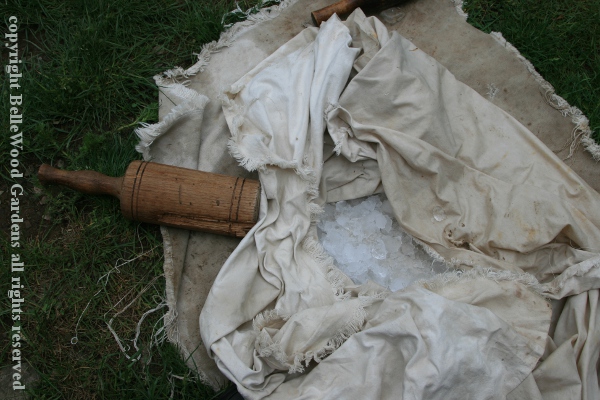
.
If you have any comments, observations, or questions about what you read here, remember you can always Contact Me
All content included on this site such as text, graphics and images is protected by U.S and international copyright law.
The compilation of all content on this site is the exclusive property of the site copyright holder.
Sunday, 7 May 2017
It's a chilly day in May and the Bouman Stickney Farmstead Museum is having one of their 18th century culinary presentations. But we're not in the kitchen with its walk-in fireplace. Instead we're in the renovated barn with both of the big barn doors open, for light and to invite people in. Some people are wearing puffy winter jackets. Wish I was one of them. Today's presentation by Susan McLellan Plaistead is popular with the children. They're really eager to help.

One thing that's needed is crushed ice, lots of it.
Benjamin Franklin, George Washington, and Thomas Jefferson were all fond of ice cream. Back in their days, of the 18th century, ice would have been a winter "crop," and harvesting ice was an important part of the yearly farming cycle.
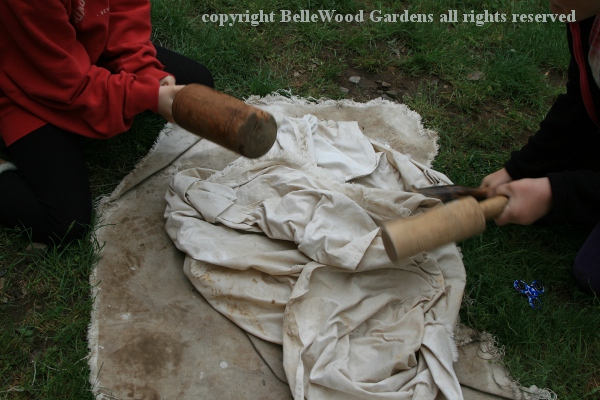
So today's (homemade) blocks of ice need to be wrapped in layers of
strong canvas, then pounded with mallets by the young participants.
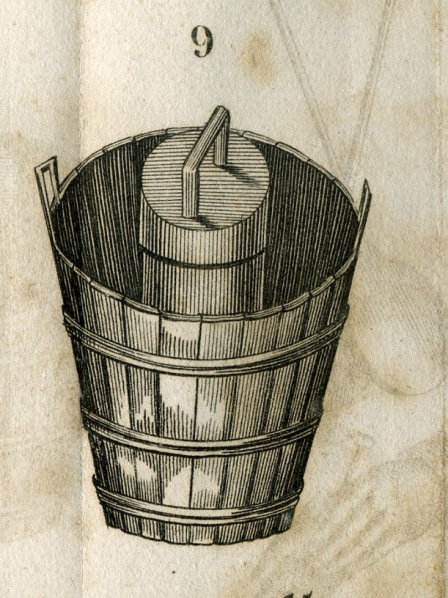
The ice will be mixed with salt and packed around the pewter sabotiere.
But that comes a little later. First the cream must be flavored and thickened.
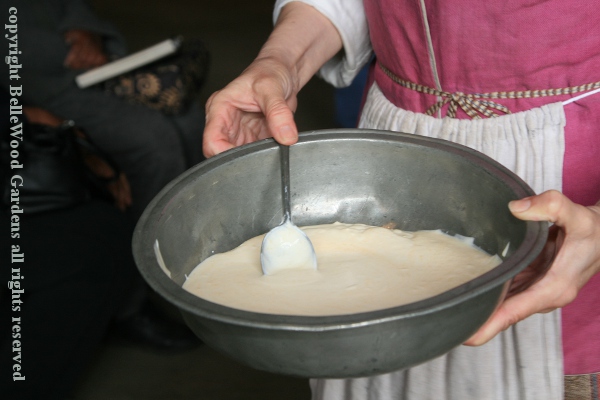
Fresh cream, from the night before and the current morning's milking, would be skimmed off the pan in which it was left to rise. Today Susan is making peach ice cream. But peaches are not in season in early May. So she will be using peaches she preserved last summer. They would have been skinned, pitted, then cooked with sugar before potting up. Add the preserved peaches and a little lemon juice to the cream. Stir, in a broad shallow pewter bowl, until it begins to thicken.
I asked if the ice cream was ever made from an egg custard base. Susan explained for today's program it is more expedient to just use cream. A custard base involves using the fire to gently heat the ingredients, then cooling it down before starting the freezing process.
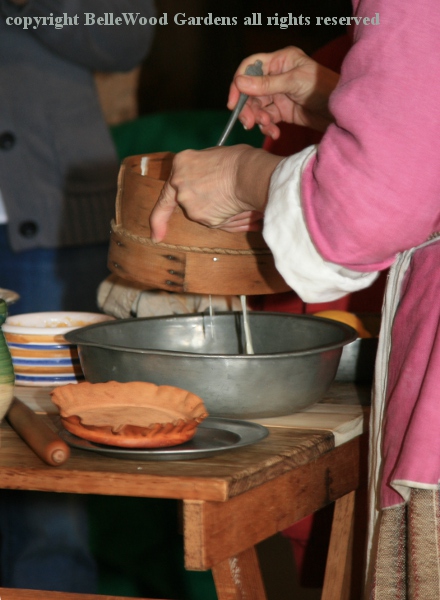
The 18th century receipt calls for straining the pieces of fruit from the thickened cream. Today, we prefer the fruit remain. An 18th century sieve would have horsehair mesh. The sieve Susan is using has synthetic mesh. The delicately flavored cream goes into the pewter sabotiere, packed beneath and around with crushed ice and salt. The sabotiere must be spun around and around. The children come and each one spins 25 turns. Not grab the handle and twist, but hold the top rim between both hands and turn.

Susan takes her spaddle and carefully scrapes down the sides to mix the colder sides with the center. The pewter sabotiere is soft metal, easily damaged if roughly treated. That's why she takes the scraping on herself, rather than also passing this task over to the children.
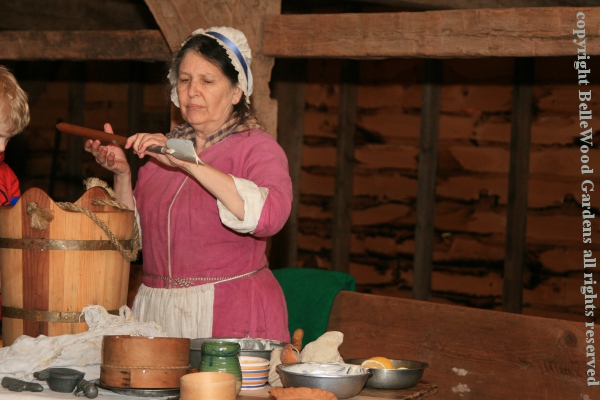
She examines the spaddle and Yes! It's ice cream.

We all get a taste of the delicately flavored frozen cream.
George Washington so enjoyed ice cream that records show he spent $200 for it.
Which was much more costly then than it would be today. And a lot of work too.
Back to May 2017
Back to the main Diary Page